Located northwest of the central cluster of temples of Sambor Prei Kuk, and whilst part of that group, they are actually outliers not only for their location but also in terms of style and era. Prasat Robang Romeas consists of the remains of nine structures/shrines that, along with the nearby Prasat Srei Krup Leak to its south, are noted to feature elements of pre-Angkorian style and construction style dating to Angkorian times. The site features 3 inscriptions dating to the tenth century and an undated inscription possibly dating to the pre-Angkorian era.
On early maps and still today, it is designated as the K group with each shrine numbered from 1-9. Shrine K6, the first in the set of pictures below, features a lintel of mid to late 7th-century style whilst the construction techniques seen in the forebody date to a much later time, suggesting the lintel was recycled from a prior construction.
K7, also of Angkorian era style, sits along side and parallel to K6 featuring remants of a square brick shrine with a forebody that featured an unusual antechamber/gopura that is remarkably intact. K4 is partially standing and similar to K7 and K8.
K8 is located to the west, an unusual elongated laterite construction featuring a wall enclosing tall columns of a peristyle that appears to lead down to a water body. K2 is square shrine, with a tiered hip style roof and is relatable to the 7th century era of Sambor Prei Kuk, although, the sandstone doorframe of its forebody is not. Of K1, K3, and K5, only remnants of their basement structures remain.
K9 (Prasat Neang Preah on Google Maps) is located 100m or so to the south of the main cluster of eight shrines.

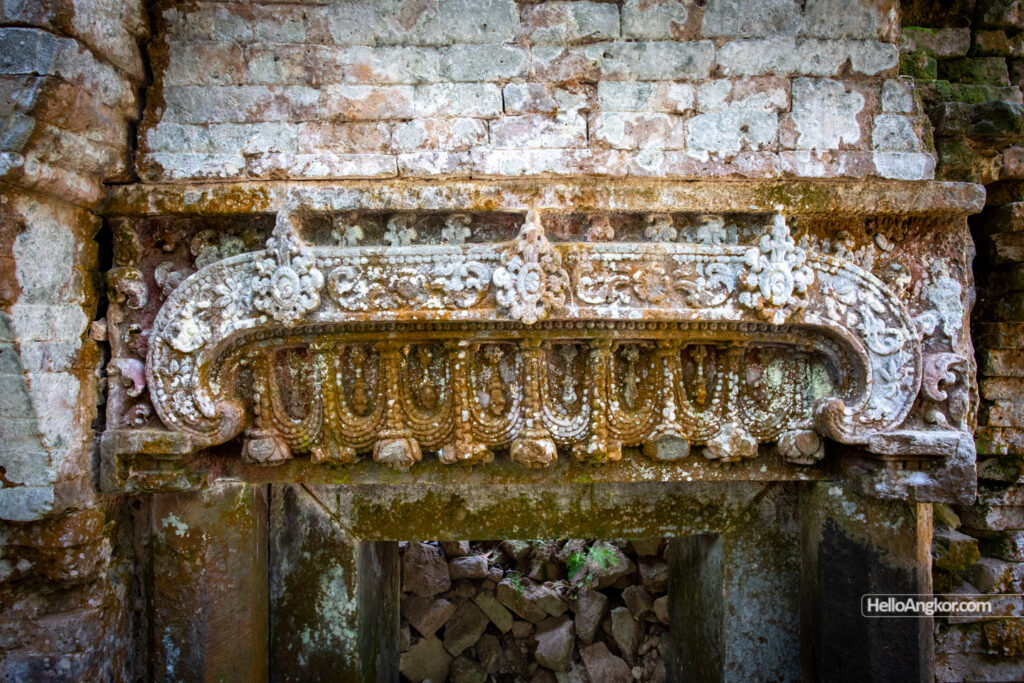
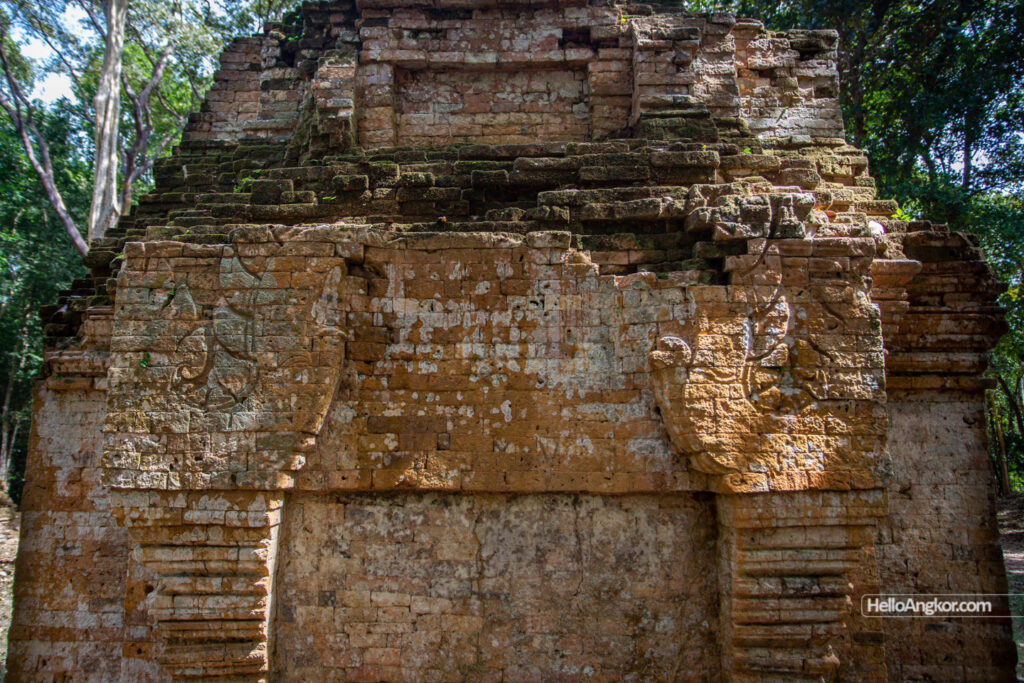
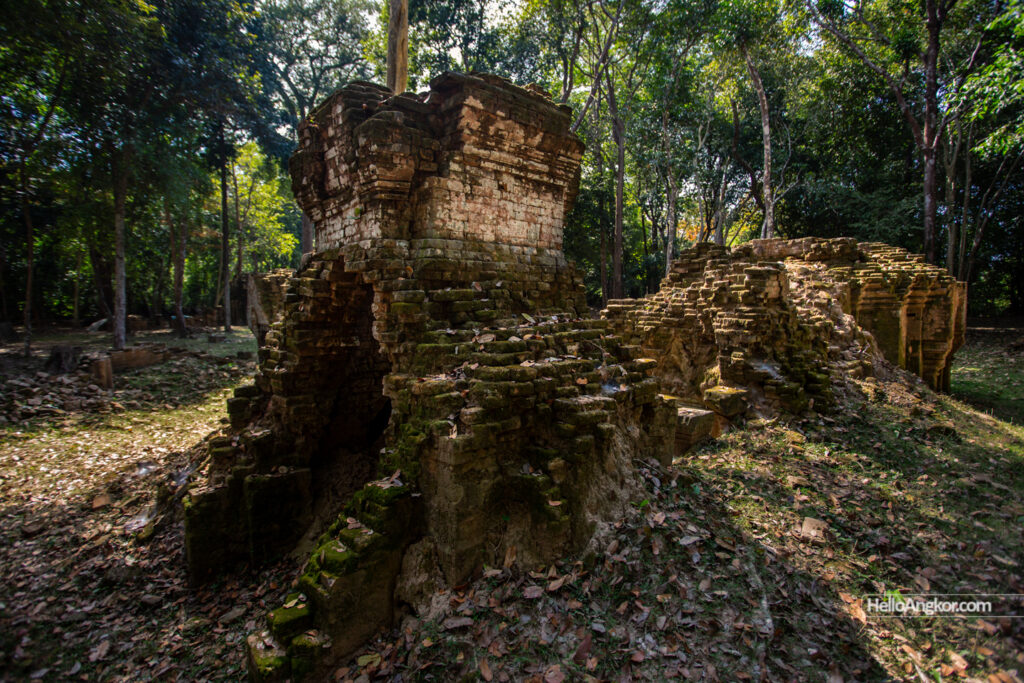
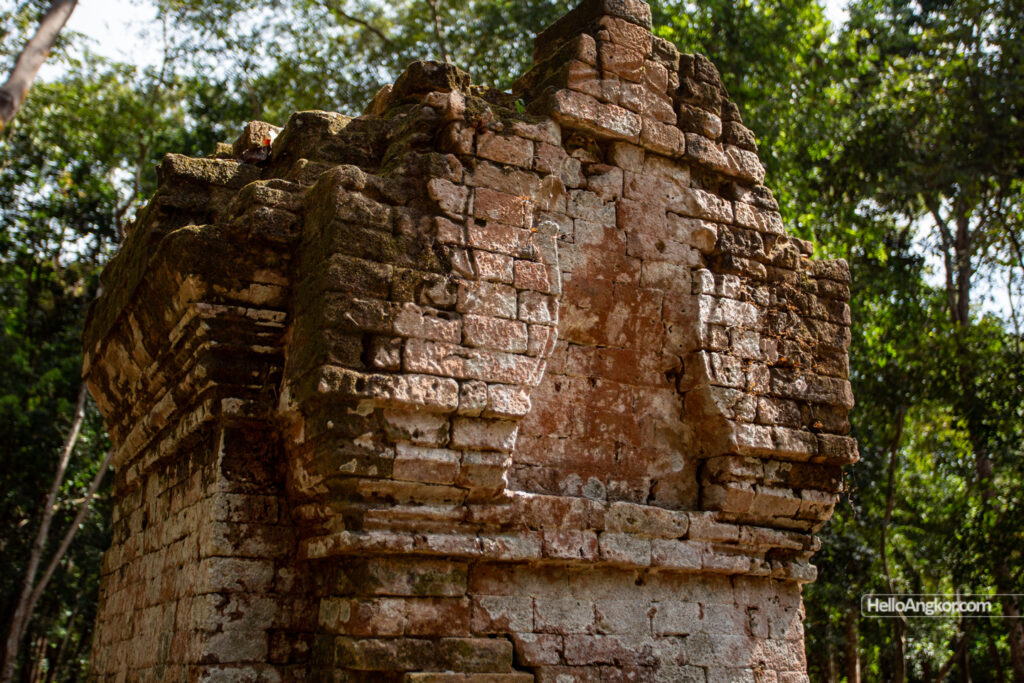
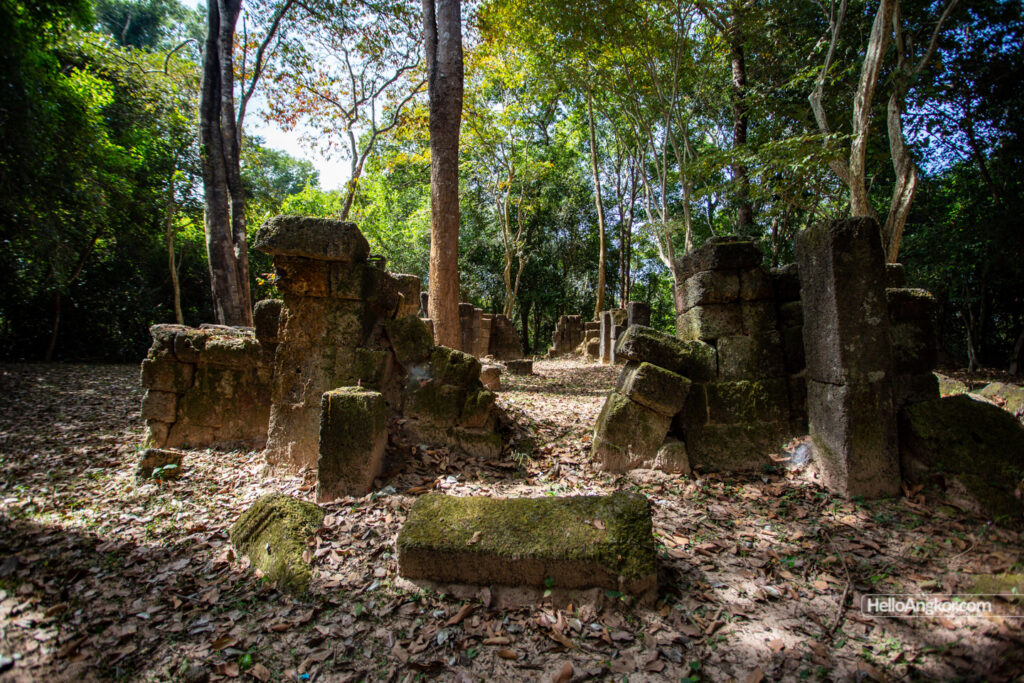
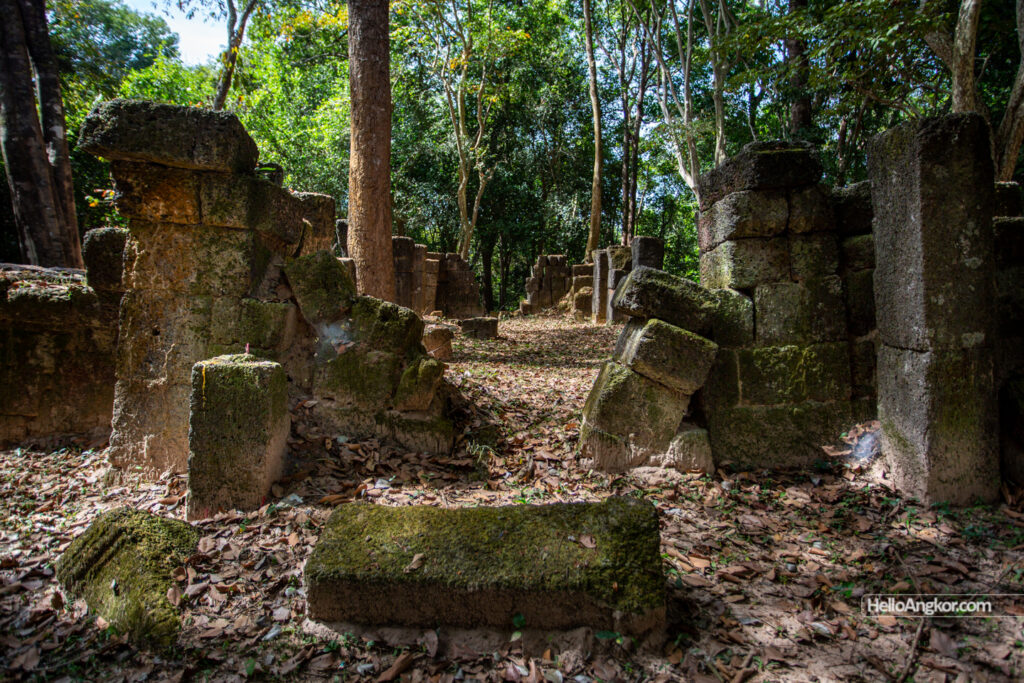
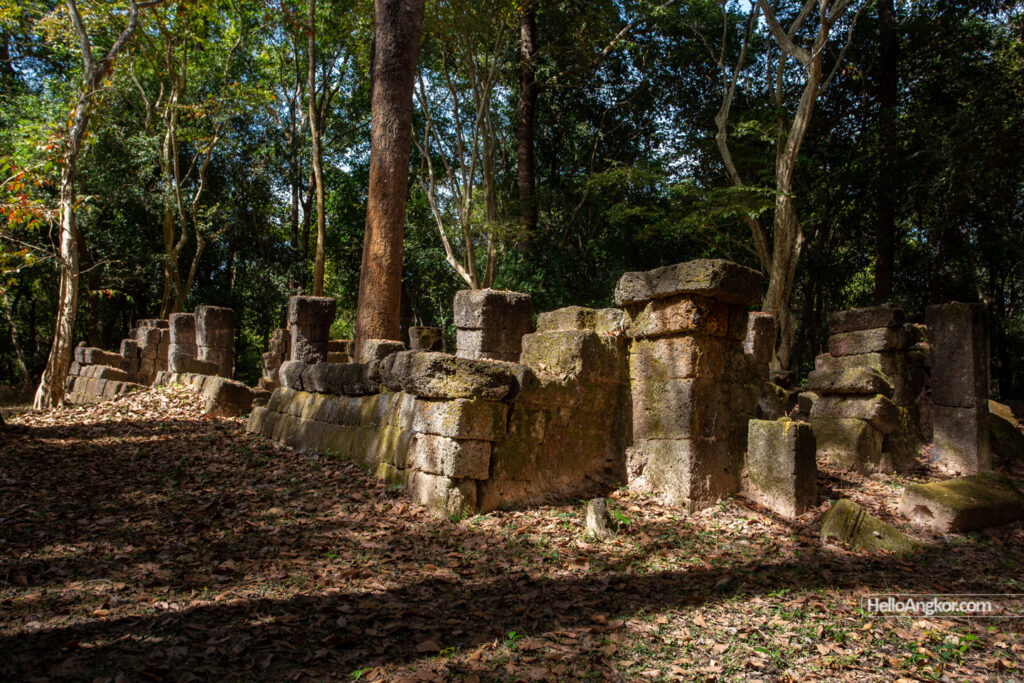

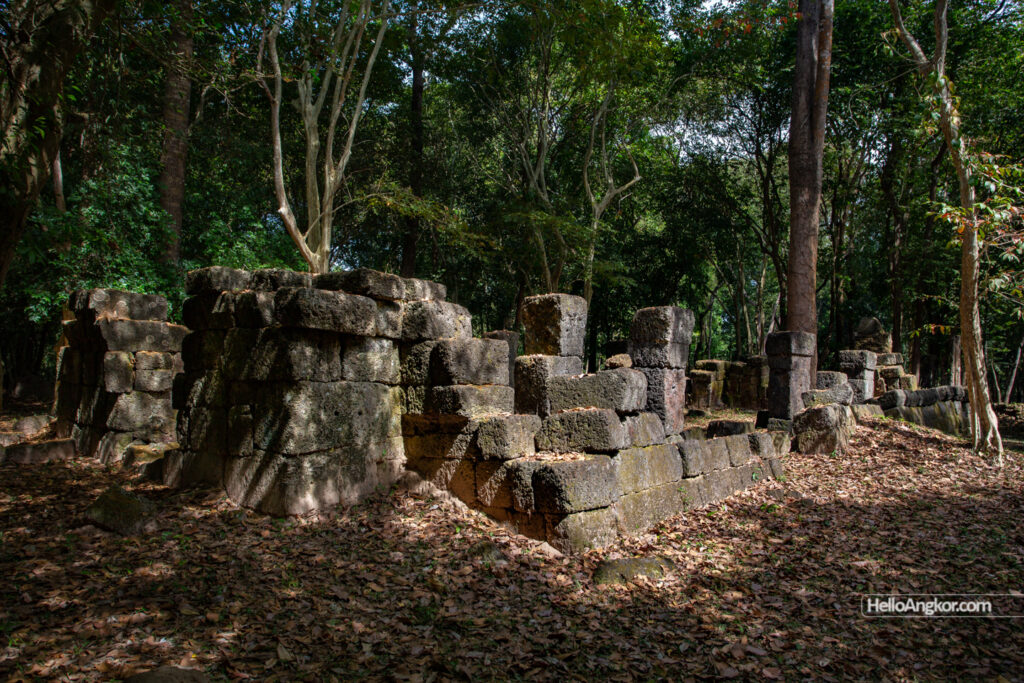
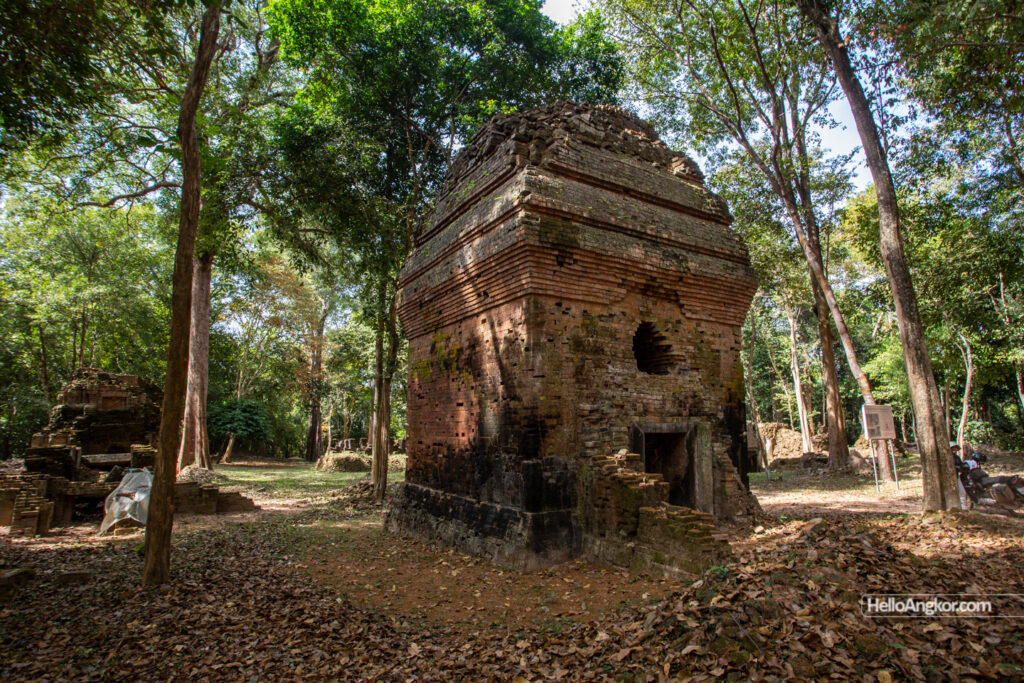
Layout
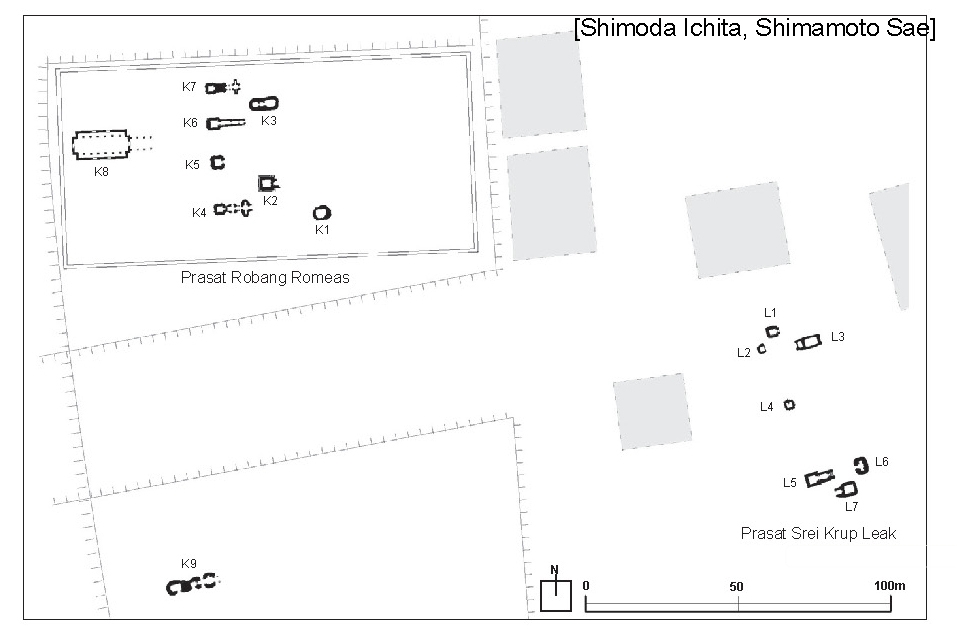
Inscriptions
Four inscriptions have been found with two (K. 150 and K. 152) dating to the tenth century and carved on the doorjambs of shrine K6. Shrine K4 also features an inscription (K, 153) dating to the very early tenth century and is heralded as the oldest to record King Suryavarman I. K. 816 is undated and notes a dedication to the diety, Prajacevara that G. Coedes noted as possibly being an incarnation of Shiva.
- K. 150 – 19 lines of Khmer and 8 lines of Sanskrit – IC V, p. 191
- K. 152 – 37 lines of Khmer – IC V, p. 191
- K. 153 – 29 lines of Khmer – IC V, p. 194
- K. 816 – 4 lines of Khmer – IC VI, p. 64
Historical Notes
Translated from French
Roban Romas’ group is double; to the north-west is the hall which bears this name in particular, and the four neighboring sanctuaries, some of which date from the classical period (tenth century), the others no doubt from the end of the same period. In this group there is a tower that has remained in épannelage and which probably dates from the primitive period, without it being possible to confirm it, while a lintel of type II was reused in the construction of the door of the sanctuary E; it presents some special arrangements: the bow, without medallions, rolls up into crooks towards the interior at the ends; the extreme volutes pose badly on the capitals.
To the southeast is an important group of which only two buildings can be safely referred to primitive Khmer art; much of the others seem contemporary, but the fact is less certain. These are the only two moreover that are of any interest.
The southernmost sanctuary A, sanctuary F of the Complement to the Inventory, shows a very rare disposition in this art. It is a rectangular building with a simple plan, but preceded by a very important vestibule. A small part of the room is not obstructed by rubble. The simple vault draws an almost regular warhead stopped by a rectangular drum. On the side walls, two projecting stones and one on the western side correspond to ordinary hooks. The stones near the entrance have just above, but not quite opposite, a mortise whose meaning escapes us. Against the ordinary, this interior part presents a decorative lintel; it is under the vestibule and offers a real interest, because it gives a new version of the birth of Brahma.
The building is adorned, on the outside, with four slightly projecting pilasters. The base and the base are of the ordinary and very simple type. The base does not present balusters, but we find them at the cornice; this one offers the peculiarity of not having a quarter-round, but a simple flat surface on which the ordinary birds are drawn, their wings open; above, the terrasson leaves without intermediary. There are three visible levels and still more indistinct ones; they are reduced to a small face which supports the terrace, so that the superstructure almost takes on the appearance of an oblique undulating surface, striped at intervals by a horizontal groove with a vertical bottom. Broaching on the lower floors, a false bay probably rose on the three sides above the lower body. It had two planes: the rear plane, of square proportions, presents an arch supported by pilasters; it encloses a niche with small columns; from the arch which terminates it seems to descend a strong pendant; it is perhaps the ruined state – of these parts makes any assertion dangerous – the remains of a standing figure.
The steepness of the floors suggests here again a vaulted end with two gables. Note, however, that a stone resembling a circular coronation sits near the monument. But we know from the example of Pr. Sakhlà and Pr. Phum Prását that the presence of a vault does not exclude the possibility of a special crowning in the middle of its edge. This stone, which is hollowed out, is in the shape of a lotus bud.
The vestibule is very simple; the N. abutment of the door received an inscription [151].
L’Art Khmer Primitif , Henri Parmentier, 1927
References and further reading
- Shimoda Ichita, Shimamoto Sae. Spatial and Chronological Sketch of the Ancient City of Sambor Prei Kuk. In: Aséanie 30, 2012. pp. 11-74.
Map
Site Info
- Site Name: Robang Romeas (Pr.) Khmer Name: ប្រាសាទក្រោលរមាស
- Reference ID: HA25720 | Posted: March 1, 2022 | Last Update: August 8th, 2023
- Other Names: K3, Prasat Robang Romeas
- Tags/Group: pr, rb, Sambor Prei Kuk, T4, Temples
- Location: Kampong Thom Province > Prasat Sambour District > Sambour Commune > Sambour Village
- Inscription Number/s: K. 150, 152, 153, 816

